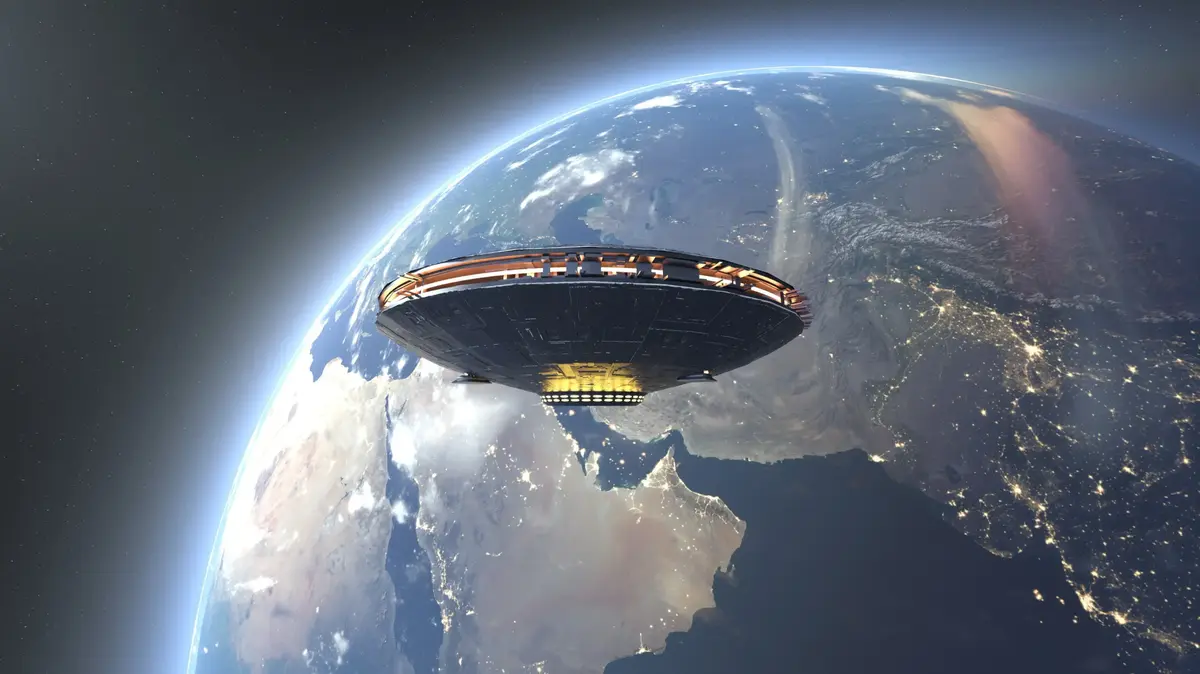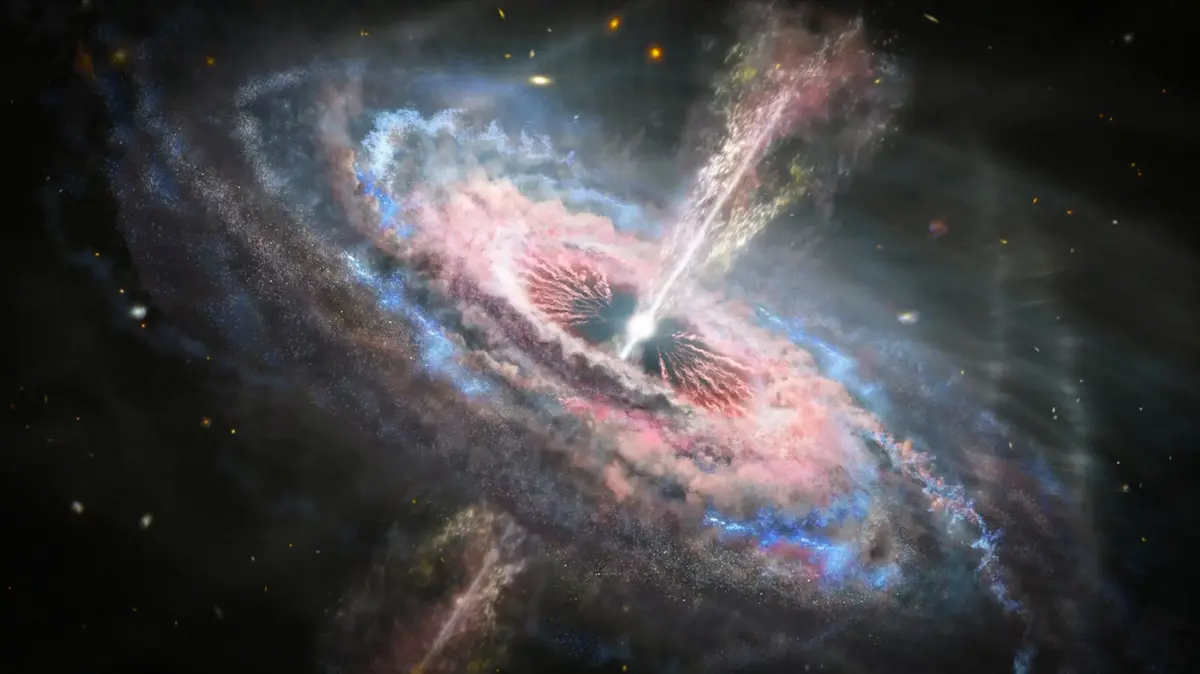Scientists have received a radio signal that could indicate extraterrestrial life.
It comes from Proxima Centauri, the star closest to the sun.
The dwarf star Proxima Centauri is our closest neighbor in space.
Researchers have now discovered possible evidence of a second exoplanet in its vicinity.
One detail of this discovery could completely change previous research.
Update 12/26/2020:
Researchers have a mysterious
radio signal
received, apparently from
Proxima Centauri
comes - where the
sun
the nearest
star
.
The signal was already discovered during observations in April or May of last year, as the British daily
Guardian has
now learned from a person close to the research team.
The
researchers
are part of the
“Breakthrough Listen project”
, which has been looking for traces of
extraterrestrial life
in space
since 2015
.
It was founded by the world famous now deceased astrophysicist
Stephen Hawking
, among others
.
“Intelligent life may be observing us somewhere in the cosmos,” Hawking said at the time.
There is no bigger question.
"It is important for us to know whether we are alone in the dark."
Like so many discoveries in recent times could also be the
radio signal
from
Proxima Centauri
by
satellite
originate or other earthly devices.
But the hope remains that the researchers came across
alien signals
.
The fluctuations in frequency are unusual and could indicate the rotation of a
planet
.
A hint of intelligent extraterrestrial life?
"It is the first serious candidate since the
'wow!' Signal
," the source told the
Guardian.
The
'Wow!' Signal
was received in 1977 and puzzled
scientists
around the world.
It was a one-off radio rash that was unusually severe.
The discoverer,
astrophysicist Jerry Ehmann
therefore noted “Wow!” Next to the notes - and helped the discovery to get its name.
After 40 years, the
origin of
the 'wow! Signal' has still not been clearly identified.
A
comet
is suspected to
have caused the rash.
It
will probably take a similar time
until the mysterious
radio signal
from
Proxima Centauri is
deciphered.
First report January 16, 2020: Italy
- Proxima Centauri is a dwarf star and at the same time the closest neighbor in space.
According to the report by the journal “Sciences Advances”, a team of researchers led by Mario Damasso at the INAF - Astrophysical Observatory in Turin found evidence of a second exoplanet in the analyzes.
If these signs were to be confirmed, all of the theories currently in use would be called into question.
Discovery in the universe: is there a new “super-earth” in space?
Our neighboring
star Proxima Centauri
probably has a second planet in addition to the planet Proxima b, the
Proxima c
.
This was the result of detailed analyzes of the precision observation data from 17.5 years of measurement.
According to the evaluations, the red star is not only orbited by the roughly Earth-sized planet Proxima b, but possibly also by Proxima c, a so-called "
super-earth
" with at least six times the mass of our
earth
.
NASA discovered a "second earth" in the universe, the discovery of which would have remained almost undiscovered.
“Super-Earth” in space: does “Proxima c” actually exist?
According to the measurements, there were indications of the second planet.
It will orbit the red dwarf star in just over five years and, according to the researchers, would be at least 5.8 times as heavy as our
earth
.
The discovery of Proxima c would thus fall into the “super-earth” category.
This applies to planets that can have up to ten times as much mass as the earth.
If a planet falls into this category, research has so far assumed that it is a rock planet.
However, according to the researchers, more observations are needed to confirm the existence of
Proxima c
.
Proxima Centauri, the sun's nearest neighbor, may host a 2nd alien planet.
Meet Proxima c.
https://t.co/e3wN4jjMRw pic.twitter.com/fWaIYjbYzU
- SPACE.com (@SPACEdotcom) January 15, 2020
New super-earth in the universe: it turns previous space research on its head
Should the existence of the “super-earth” Proxima c actually be confirmed, all previous assumptions about the formation of super-earths would appear in a new light.
So far, researchers have assumed that such planets always form close to the “snow line” around a star.
That is the distance to a star at which water can condense into ice.
The case is different with Proxima c.
Here the orbit is far from the snow line in the extremely cold outskirts around the red dwarf star
Proxima Centauri
.
With this, all models for the formation of such planets would have to be adapted to prove its existence.
“Proxima b” is also interesting for astronomers: Liquid water on a planet in space?
The
star
Proxima Centauri is 4.2 light years from our Sun and belongs to the group of red dwarfs.
These make up around three quarters of all stars in the Milky Way.
As early as 2016, researchers discovered a planet at Proxima Centauri, the Proxima b.
This is about the size of the earth and orbits in the so-called habitable zone around the star.
This means that the temperatures on the dwarf star
allow
the existence of liquid
water
.
+
An illustration by Proxima b.
© picture alliance / M. Kornmesser / M. Kornmesser
According to previous knowledge, this is a basic requirement for life.
So
far, it has not been
possible
to prove
whether there is actually a water resource on Proxima b or even
life
.
Changes in stars can have drastic consequences for the earth.
This mega-asteroid, heading towards Earth, put NASA experts on alert.
In Canada, researchers have now received mysterious signals from space.
A project by Elon Musk and his SpaceX company has had a serious impact on our night skies.
Astronomers clearly criticize the program.
Researchers at the Max Planck Society have discovered a planet that is so similar to our earth "like no other".
Can people live there?
Astronomers have now made an astonishing discovery in space: six objects have been identified in the center of the Milky Way that have not yet been classified.
As
reported by
nordbuzz.de *
, a meteorite in Oldenburg caused a stir.
Elon Musk is helping US space travel.
Now the first launch of a manned SpaceX rocket into space to the ISS is taking place.
* nordbuzz.de is part of the nationwide Ippen digital editorial network
List of rubric lists: © picture alliance / M. Kornmesser / M. Kornmesser















